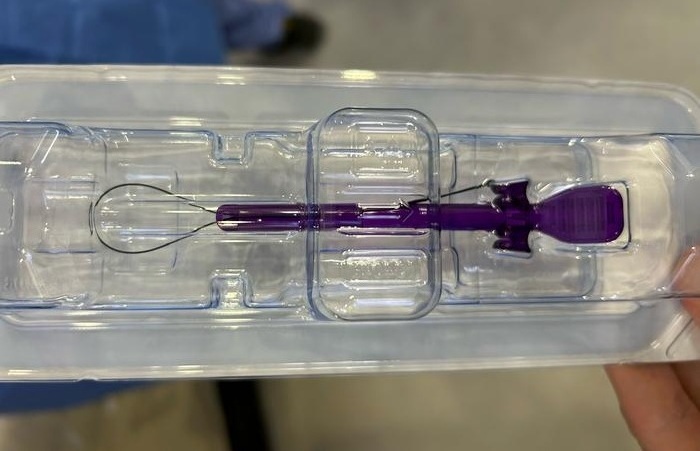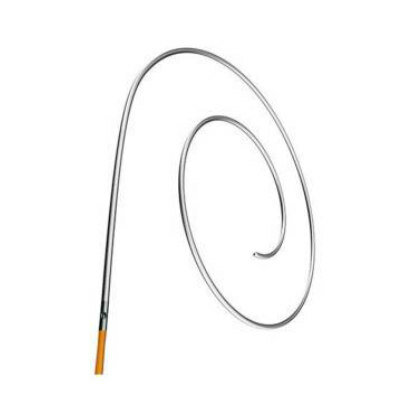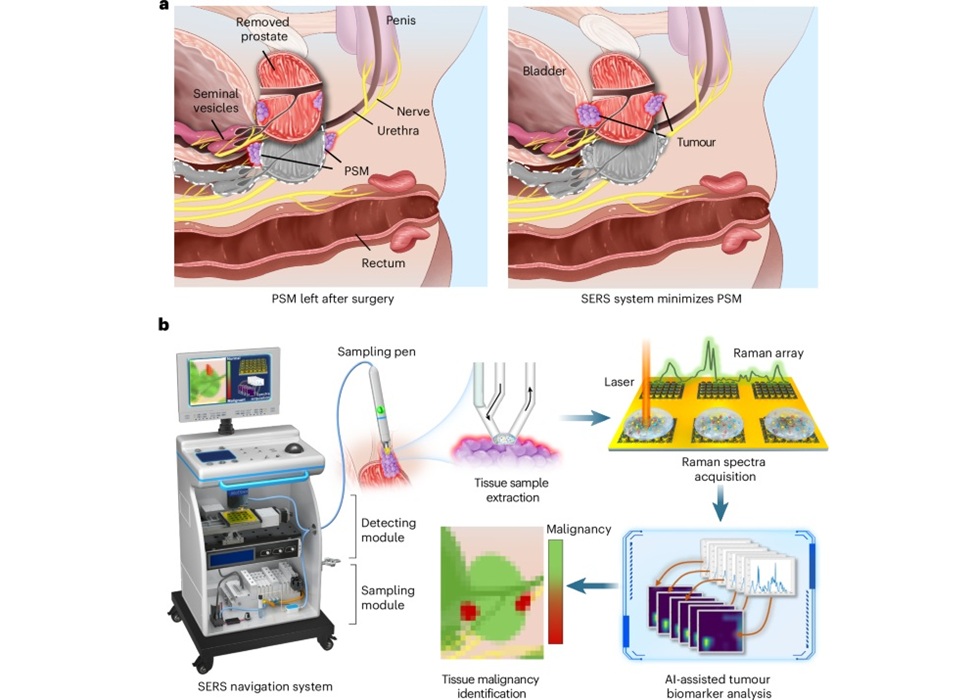Haiti Cholera Outbreak Largest in Recent Memory
|
By HospiMedica International staff writers Posted on 30 Jan 2013 |
The cholera outbreak in Haiti accounted for 57% of all cholera cases and 45% of cholera deaths reported to the World Health Organization (WHO; Geneva, Switzerland) in 2010 and 2011, according to a new study.
Researchers at the US Centers for Disease Control and Prevention (CDC; Atlanta, GA, USA) reported the findings of the Haitian National Cholera Surveillance System (NCSS) set up in October 2010—nearly 10 months after the devastating earthquake that shattered the country—when Haiti was stricken by epidemic cholera, which has so far sickened more than 600,000 people and killed nearly 7,500. The cholera was possibly inadvertently introduced by troops from Southeast Asia who formed part of the earthquake relief effort, as the strain involved is similar to the one circulating in Asia, and different from those found in Latin America and the USA.
Within 29 days of the first report, cases of Vibrio cholerae (serotype Ogawa, biotype El Tor) were confirmed in all 10 administrative departments in Haiti. Through October 20, 2012, the Haiti Public Health Ministry reported 604,634 cases of infection, 329,697 hospitalizations, and 7,436 deaths from cholera. The ministry isolated V. cholerae O1 from 1,675 of 2,703 stool specimens tested (62%). The cumulative attack rate was 5.1% at the end of the first year, and 6.1% at the end of the second year.
The researchers reported that the cumulative case fatality rate consistently trended downward, reaching 1.2% at the close of year two, with departmental cumulative rates ranging from 0.6% to 4.6%. Within three months after the start of the epidemic, the rolling 14-day case fatality rate was 1% and remained at or below this level with few, brief exceptions. Overall, the cholera epidemic in Haiti accounted for 57% of all cholera cases and 53% of all cholera deaths reported to the WHO in 2010, and 58% of all cholera cases and 37% of all cholera deaths in 2011.
“The earthquake had seriously damaged the country's health care, water and sanitation systems, which had already been precarious; only 63% of Haiti's 9.8 million people had access to an improved drinking water source, just 12% got piped and treated water, and only 17% had adequate sanitation,” concluded lead author Ezra Barzilay, MD, and colleagues of the CDC. “The international goal in a cholera outbreak is a case fatality rate of no more than 1%. That was made more challenging because of these conditions.”
Related Links:
World Health Organization
US Centers for Disease Control and Prevention
Researchers at the US Centers for Disease Control and Prevention (CDC; Atlanta, GA, USA) reported the findings of the Haitian National Cholera Surveillance System (NCSS) set up in October 2010—nearly 10 months after the devastating earthquake that shattered the country—when Haiti was stricken by epidemic cholera, which has so far sickened more than 600,000 people and killed nearly 7,500. The cholera was possibly inadvertently introduced by troops from Southeast Asia who formed part of the earthquake relief effort, as the strain involved is similar to the one circulating in Asia, and different from those found in Latin America and the USA.
Within 29 days of the first report, cases of Vibrio cholerae (serotype Ogawa, biotype El Tor) were confirmed in all 10 administrative departments in Haiti. Through October 20, 2012, the Haiti Public Health Ministry reported 604,634 cases of infection, 329,697 hospitalizations, and 7,436 deaths from cholera. The ministry isolated V. cholerae O1 from 1,675 of 2,703 stool specimens tested (62%). The cumulative attack rate was 5.1% at the end of the first year, and 6.1% at the end of the second year.
The researchers reported that the cumulative case fatality rate consistently trended downward, reaching 1.2% at the close of year two, with departmental cumulative rates ranging from 0.6% to 4.6%. Within three months after the start of the epidemic, the rolling 14-day case fatality rate was 1% and remained at or below this level with few, brief exceptions. Overall, the cholera epidemic in Haiti accounted for 57% of all cholera cases and 53% of all cholera deaths reported to the WHO in 2010, and 58% of all cholera cases and 37% of all cholera deaths in 2011.
“The earthquake had seriously damaged the country's health care, water and sanitation systems, which had already been precarious; only 63% of Haiti's 9.8 million people had access to an improved drinking water source, just 12% got piped and treated water, and only 17% had adequate sanitation,” concluded lead author Ezra Barzilay, MD, and colleagues of the CDC. “The international goal in a cholera outbreak is a case fatality rate of no more than 1%. That was made more challenging because of these conditions.”
Related Links:
World Health Organization
US Centers for Disease Control and Prevention
Latest Critical Care News
- Magnetically Guided Microrobots to Enable Targeted Drug Delivery

- Smart Nanomaterials Detect and Treat Traumatic Brain Injuries Simultaneously
- Earlier Blood Transfusion Could Reduce Heart Failure and Arrhythmia in Heart Disease Patients
- 'Smart' Shirt Detects Epileptic Seizures in Real Time
- Skin Patch Measures Effectiveness of Flu/COVID Vaccines in 10 Minutes
- Complete Revascularization Reduces Risk of Death from Cardiovascular Causes
- Tiny Fish-Inspired Robots Navigate Through Body to Deliver Targeted Drug Therapy
- Coronary Artery Stenosis Could Protect Patients from Pulmonary Embolism Effects
- Sweat-Powered Sticker Turns Drinking Cup into Health Sensor
- Skin-Mounted 3D Microfluidic Device Analyzes Sweat for Real-Time Health Assessment
- New Therapeutic Brain Implants to Eliminate Need for Surgery
- Stem Cell Patch Gently Heals Damaged Hearts Without Open-Heart Surgery
- Biomaterial Vaccines to Make Implanted Orthopedic Devices Safer
- Deep Learning Model Predicts Sepsis Patients Likely to Benefit from Steroid Treatment
- Programmable Drug-Delivery Patch Promotes Healing and Regrowth After Heart Attack
- Breakthrough Ultrasound Technology Measures Blood Viscosity in Real Time
Channels
Surgical Techniques
view channel
New Study Findings Could Halve Number of Stent Procedures
When a coronary artery becomes acutely blocked during a heart attack, opening it immediately is essential to prevent irreversible damage. However, many patients also have other narrowed vessels that appear... Read more
Breakthrough Surgical Device Redefines Hip Arthroscopy
Hip arthroscopy has surged in popularity, yet surgeons still face major mechanical constraints when navigating deep joint spaces through traditional cannulas. Limited tool mobility and the need for an... Read morePatient Care
view channel
Revolutionary Automatic IV-Line Flushing Device to Enhance Infusion Care
More than 80% of in-hospital patients receive intravenous (IV) therapy. Every dose of IV medicine delivered in a small volume (<250 mL) infusion bag should be followed by subsequent flushing to ensure... Read more
VR Training Tool Combats Contamination of Portable Medical Equipment
Healthcare-associated infections (HAIs) impact one in every 31 patients, cause nearly 100,000 deaths each year, and cost USD 28.4 billion in direct medical expenses. Notably, up to 75% of these infections... Read more
Portable Biosensor Platform to Reduce Hospital-Acquired Infections
Approximately 4 million patients in the European Union acquire healthcare-associated infections (HAIs) or nosocomial infections each year, with around 37,000 deaths directly resulting from these infections,... Read moreFirst-Of-Its-Kind Portable Germicidal Light Technology Disinfects High-Touch Clinical Surfaces in Seconds
Reducing healthcare-acquired infections (HAIs) remains a pressing issue within global healthcare systems. In the United States alone, 1.7 million patients contract HAIs annually, leading to approximately... Read moreHealth IT
view channel
Printable Molecule-Selective Nanoparticles Enable Mass Production of Wearable Biosensors
The future of medicine is likely to focus on the personalization of healthcare—understanding exactly what an individual requires and delivering the appropriate combination of nutrients, metabolites, and... Read moreBusiness
view channel
Philips and Masimo Partner to Advance Patient Monitoring Measurement Technologies
Royal Philips (Amsterdam, Netherlands) and Masimo (Irvine, California, USA) have renewed their multi-year strategic collaboration, combining Philips’ expertise in patient monitoring with Masimo’s noninvasive... Read more
B. Braun Acquires Digital Microsurgery Company True Digital Surgery
The high-end microsurgery market in neurosurgery, spine, and ENT is undergoing a significant transformation. Traditional analog microscopes are giving way to digital exoscopes, which provide improved visualization,... Read more
CMEF 2025 to Promote Holistic and High-Quality Development of Medical and Health Industry
The 92nd China International Medical Equipment Fair (CMEF 2025) Autumn Exhibition is scheduled to be held from September 26 to 29 at the China Import and Export Fair Complex (Canton Fair Complex) in Guangzhou.... Read more














